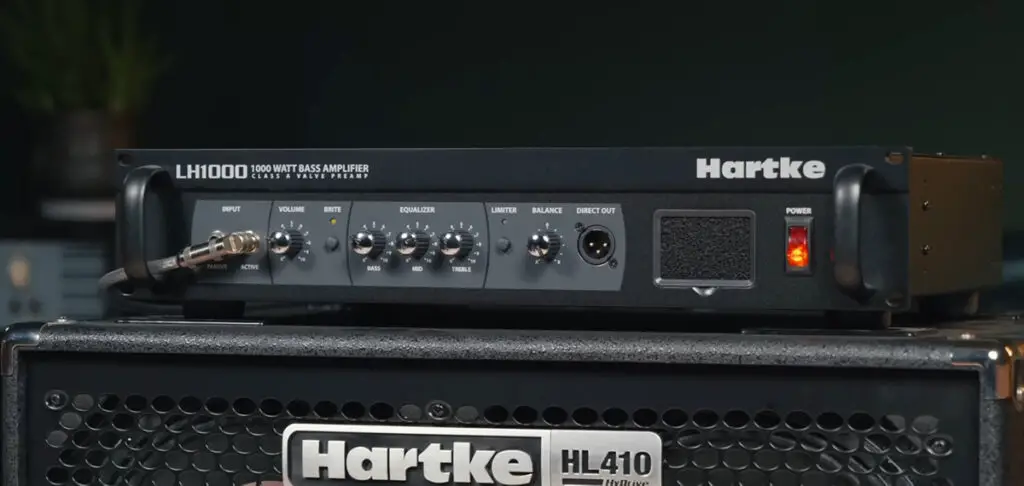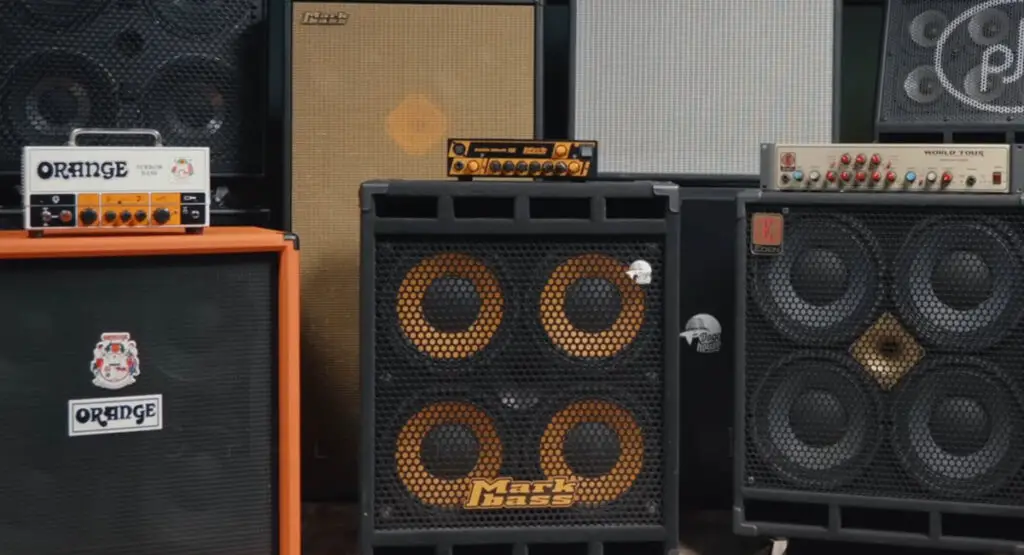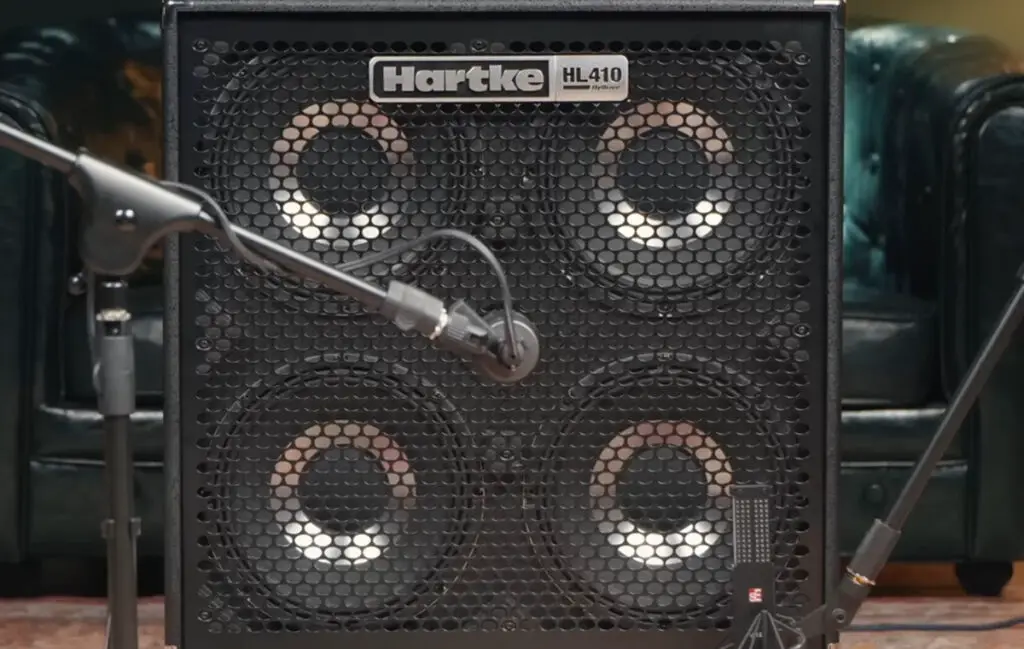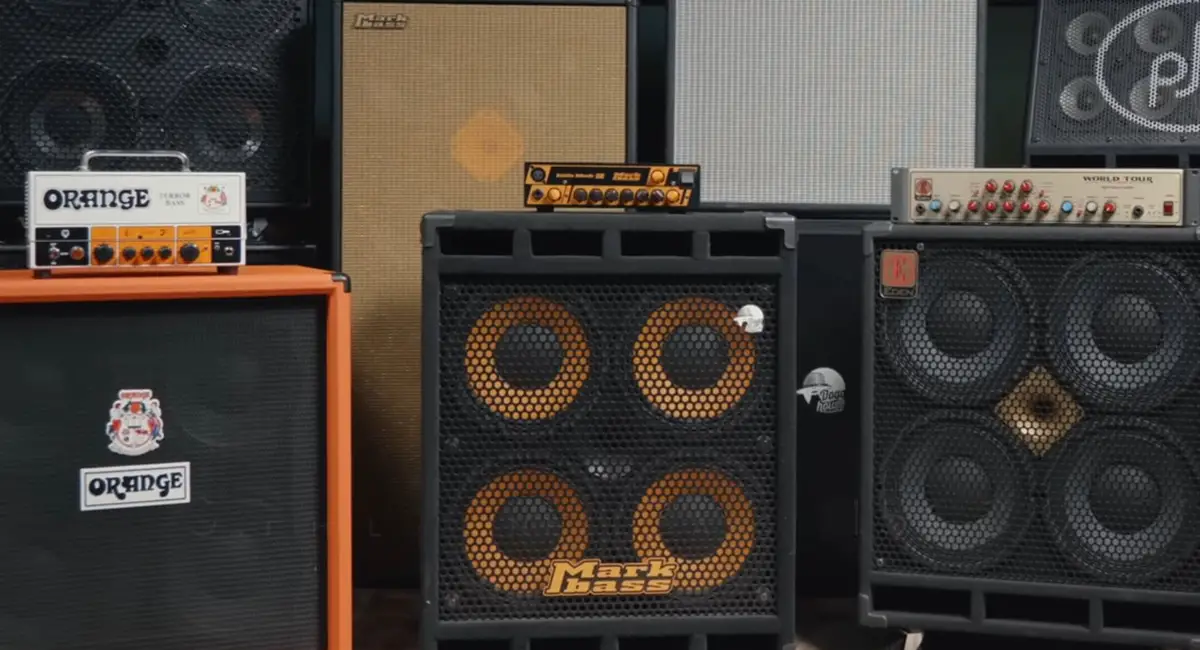In the world of bass guitar, the amplification system plays a pivotal role in shaping and delivering the sound that reaches the audience’s ears. This system typically includes two key components: a bass amp and a bass cabinet.
While they work together to produce the sound, each has distinct functions, characteristics, and influences on the overall tone.
This article will discuss the unique features, functions, and impacts of these two integral components, providing you with a comprehensive understanding that will help optimize your bass guitar setup and achieve the sound you desire.
What Is A Bass Cabinet?
A bass cabinet, also known as a speaker cabinet, is a box that houses one or more bass loudspeakers (also known as drivers). In a typical setup, the bass guitar is plugged into an amplifier, which then sends the amplified signal to the bass cabinet.
The cabinet then produces the sound. The specific design and construction of the cabinet can greatly influence the resulting sound.
Bass cabinets come in different sizes and configurations. A common type of bass cabinet is a “4×10”, which means it contains four 10-inch speakers. Other common configurations include 1×12, 1×15, 2×10, 2×12, and 8×10.
The configuration and size of the speakers will affect the overall sound output. For example, larger speakers can generally produce lower frequencies more effectively, while smaller speakers are better at producing higher frequencies.
The materials used in the cabinet also play a role in the sound. Denser woods like birch or maple produce a tighter, more focused sound, while lighter woods like pine can give a warmer, more resonant tone. The shape and construction of the cabinet can also affect the sound dispersion and resonance.
A bass cabinet is an essential component of a bassist’s gear, and choosing the right one can greatly influence the overall sound and tone of the bass guitar.

What Is A Bass Amp?
A bass amp, short for bass amplifier, is an electronic device that amplifies the electrical signal from a bass guitar so that it can drive a loudspeaker and produce sound at a higher volume.
The bass amp essentially makes the sound of the bass loud enough to be heard by the audience in a live performance setting, or to be recorded in a studio.
Bass amps typically consist of two sections: the preamp and the power amp.
The preamp takes the small electrical signal from the bass and amplifies it to a level that the power amp can handle. Along the way, the preamp often has controls to shape the tone of the sound, such as equalization settings for adjusting bass, mid, and treble frequencies, and sometimes effects like overdrive or compression.
The power amp takes the line level signal from the preamp and boosts it to a level that can drive a speaker. This boosted signal is then sent to the speaker cabinet (or built-in speakers in the case of combo amps), which produces the sound that we hear.
Bass amps come in various shapes and sizes, from small practice amps to large, powerful amps used on big stages. The type of amp a bassist uses can greatly influence the sound of their instrument.

What Is The Difference Between A Bass Amp And A Bass Cabinet?
A bass amp (short for amplifier) and a bass cabinet serve two different purposes in the process of amplifying the sound from a bass guitar or double bass, but both are necessary components for playing these instruments at volumes suitable for performances.
A bass amp is an electronic device that amplifies the low-level audio signal from a bass guitar, while a bass cabinet is a box that houses speakers which produce sound from the amplified signal. The bass amp shapes and boosts the sound, and the bass cabinet is responsible for outputting that sound.
A bass amp is the device that takes the low-level audio signal from the instrument and amplifies it into a larger signal. The bass guitar is typically connected directly to the amplifier via a 1/4-inch cable.
The amplifier then boosts the signal from the bass so it’s strong enough to move the speakers in the bass cabinet and produce sound.
Amplifiers usually have various controls to shape the tone of the sound, such as equalization settings for adjusting bass, mid, and treble frequencies, and sometimes effects like overdrive or compression.
A bass cabinet, on the other hand, is a box that contains the speakers (also known as drivers). The amplified signal from the bass amp is sent to the speakers in the bass cabinet, which vibrate to produce sound.
The specific design and construction of the cabinet can greatly influence the resulting sound.
In many cases, you’ll find these two components housed together in a single unit, which is known as a combo amp. However, they can also be separate units, which is often the case for larger venues or for musicians who want more control over their sound.
This setup, with a separate amplifier and cabinet, is known as a stack or amp stack. In a stack, the amplifier (often referred to as the amp head) and cabinet are separate, allowing musicians to mix and match different amps and cabinets according to their sound preference.
Here’s a comparison table summarizing the differences between a bass amp and a bass cabinet:
| Bass Amp | Bass Cabinet | |
| Function | Amplifies the signal from the bass | Produces sound from the amplified signal |
| Connection | Connected directly to the bass | Receives signal from the bass amp |
| Design Features | Various tone control settings | Different speaker sizes and configurations |
| Effect on Sound | Shapes the tone of the sound | Influences the output and dispersion of sound |
| Physical Characteristics | Typically smaller and lighter | Larger and heavier due to speakers |
| Use in Amp Stacks | Referred to as the amp head | Used as a separate unit in the stack |
Bass amps and cabinets serve different functions, but both are essential components in a bassist’s setup. The amp shapes the sound, while the cabinet influences how that sound is output and heard.
Are Bass And Guitar Cabs The Same?
While bass cabinets and guitar cabinets serve the same basic function of producing sound from an amplified signal, they are not the same and are typically designed differently to meet the unique needs of bass and guitar sounds.
Here are some of the differences:
- Speaker Size: Bass cabinets usually have larger speakers, often 10, 12, or 15 inches in diameter, to handle the lower frequencies produced by the bass guitar. Guitar cabinets, on the other hand, often use smaller speakers, often 10 or 12 inches, because they need to accurately reproduce mid and high frequencies.
- Frequency Range: Bass cabinets are designed to reproduce low frequencies accurately, as the bass guitar plays notes in a lower frequency range than a regular guitar. Conversely, guitar cabinets are designed to handle a higher frequency range.
- Power Handling: Bass cabinets typically need to handle more power than guitar cabinets because lower frequencies require more power to achieve the same perceived volume as higher frequencies.
- Construction: Because bass frequencies are more physically demanding (they cause more movement in the speaker), bass cabinets are typically built more robustly than guitar cabinets.
While bass and guitar cabinets are designed for their respective instruments, it’s worth noting that they can technically be used interchangeably. However, a guitar cabinet might not effectively reproduce the lower frequencies of a bass and could potentially be damaged by the greater physical demands of the bass frequencies.
Conversely, a bass cabinet could reproduce guitar frequencies, but it might not give the desired tone for a guitar as it’s optimized for lower frequencies.
So, while they serve similar roles, bass cabinets and guitar cabinets are designed with different specifications to handle the unique requirements of their respective instruments.
Can Guitar Cabs Be Used For Bass?
While a guitar cabinet can technically be used with a bass guitar, it is generally not recommended for a couple of reasons.
- Frequency Response: Guitar cabinets are designed to handle the frequency range of a guitar, which is higher than that of a bass. As a result, a guitar cabinet might not accurately reproduce the lower frequencies of a bass guitar. The sound may lack depth and richness because the cabinet isn’t built to resonate well with lower frequencies.
- Power Handling and Durability: Bass frequencies are more physically demanding on speakers than guitar frequencies. This means that a guitar speaker can potentially be damaged if it is pushed too hard with bass frequencies. Guitar speakers are not built to handle the same amount of movement that bass speakers are and could be at risk of damage if used for bass at high volumes.
While it’s possible to use a guitar cab for low-volume practice or in a pinch, for optimal sound quality and to prevent potential damage, it’s recommended to use equipment designed for the intended instrument. So, if you’re playing bass, it’s best to use a bass cabinet.

Can A Guitar Damage a Bass Amp Or Cab?
A guitar is unlikely to damage a bass amp or cabinet.
In fact, many guitarists will sometimes use a bass amp or cab for certain tonal characteristics. Bass amps and cabs are designed to handle lower frequencies and typically higher power levels than their guitar counterparts.
When you play a guitar through a bass amp, the amp and cab will accurately reproduce the frequencies that a guitar produces, but the overall tone may be different from what you would get with a guitar amp. This is because the frequency response and tonal characteristics of a bass amp are designed for bass frequencies, which are lower than guitar frequencies.
So, if you like the sound you get from playing your guitar through a bass amp, there’s no harm in doing so. It won’t damage your equipment, but it may not give you the traditional guitar sound you’re used to.
How Do I Know If My Bass Cab Is Blown?
There are several signs that can indicate if a bass cabinet (more specifically, the speakers in the cabinet) is blown or damaged. Here are some common symptoms to look for:
- Distorted Sound: If your bass cab is producing a sound that is distorted or fuzzy, especially at lower volumes, it may be a sign that the speakers are blown.
- Lack of Sound: If you’re not getting any sound from your bass cab, even when it’s properly connected and powered, the speakers may be blown. However, keep in mind that this could also indicate other issues, like a problem with your cable, amp, or the connection between your gear.
- Crackling or Popping Noises: These noises can indicate a speaker that is partially blown. This might happen at certain frequencies or volume levels.
- Physical Damage: Sometimes, you can see physical signs of damage. If the speaker cone (the part that moves and produces sound) is torn or if you see damage to the voice coil (the part of the speaker that vibrates to produce sound), that’s a clear sign of a blown speaker.
- Vibrations or Rattling: If you hear rattling or feel excessive vibrations from the cabinet while playing, it could mean that a speaker is damaged.
- Flapping Sound: If you hear a sound that seems like the speaker cone is flapping around, it can indicate the speaker is blown. This can happen if the speaker cone becomes detached from the voice coil.
If you’re experiencing any of these symptoms, it would be a good idea to have your equipment checked by a professional. Speaker issues can sometimes be repaired, but in many cases, a blown speaker will need to be replaced.
Conclusion
The roles of a bass amp and a bass cabinet in shaping and delivering your sound cannot be overstated.
While the bass amp amplifies and shapes the tone of your bass guitar or double bass, the bass cabinet takes that amplified signal and translates it into the sound that fills the room.
Understanding the distinct functions and characteristics of these two components is fundamental in optimizing your setup and achieving your desired sound.
Whether you’re playing in your bedroom, recording in a studio, or performing on a large stage, having a solid grasp on the dynamics of bass amps and cabinets will empower you to make informed decisions, enhancing your sound and your musical journey.


